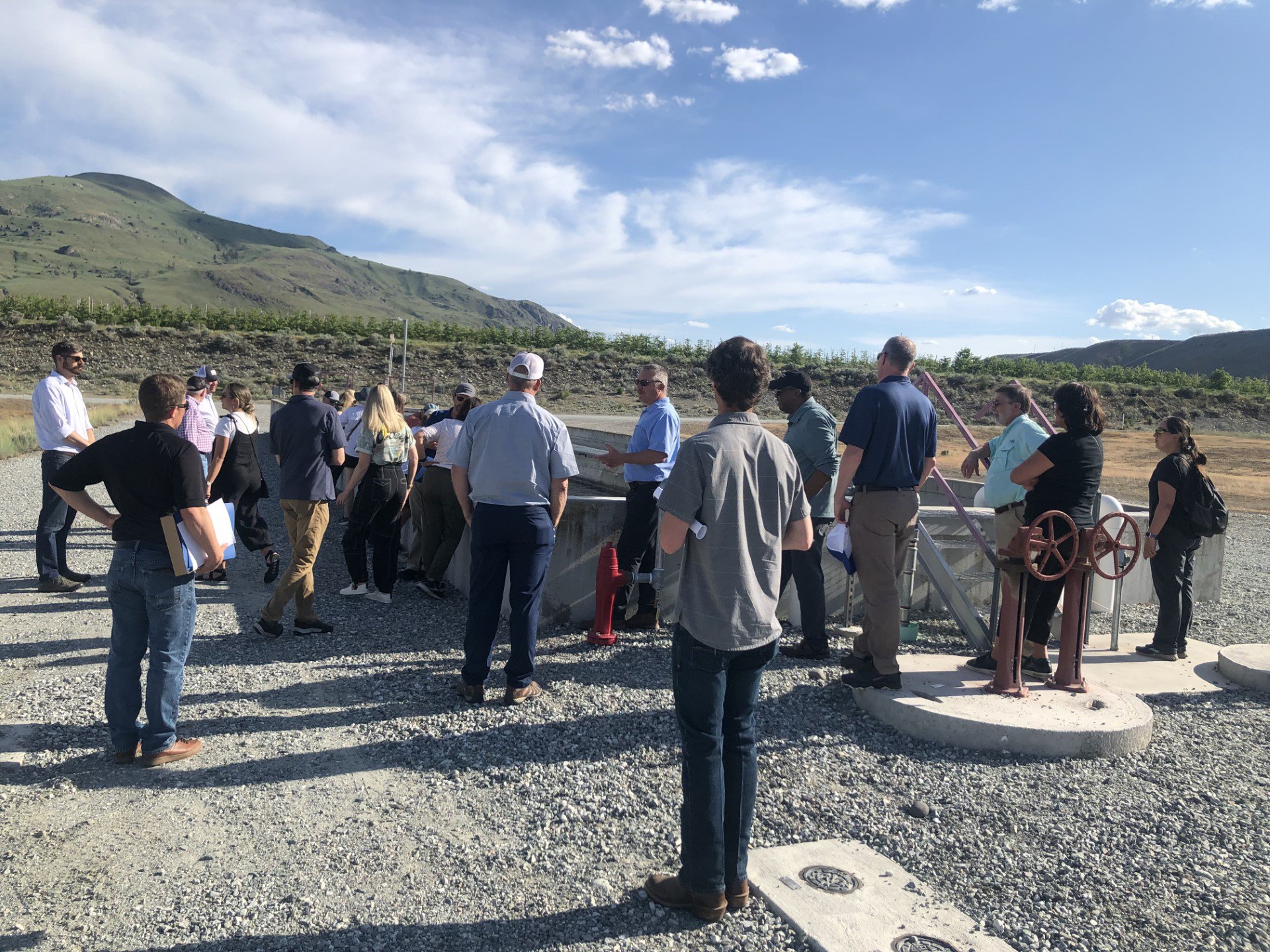May Council Meeting Round-Up
- May 24, 2023
- Ann E. Gravatt
The Council travels to each of the four Northwest states for one meeting annually, a post-pandemic balance of in-person and virtual meetings. For 2023, the March meeting was held in Coeur d’Alene, Idaho; May in Wenatchee, Washington; June will be in Victor, Montana; and October in Redmond, Oregon. These meetings are an opportunity for us to tour local projects, meet with regional utilities, and hear directly from state policymakers, project managers, and other local stakeholders.
This month’s meeting in Wenatchee was very full. Here’s a summary of just a few of the presentations to Council.
Power Committee Meeting
Liz Reichart of the Washington Department of Commerce provided an update on Washington’s policies to reduce carbon emissions from buildings. Buildings are the second largest contributor of greenhouse gas emissions in Washington after transportation, prompting the legislature to focus on building policy.
Reichart highlighted four primary policies: energy codes for new construction; performance standards for existing buildings over 20,000 square feet; appliance standards; and state-owned buildings. The energy codes for new buildings will make them 70 percent more efficient by 2031 compared to 2006 levels. New residences will also be “EV ready” and new commercial buildings will be ready for solar generation.
For existing buildings over 50,000 square feet, a performance standard is now in place with targeted reductions by 2026. Building owners are also providing financial incentives to help reach the targets. The state appliance standards cover appliances not regulated by federal appliance standards. Reichart also highlighted a focus on workforce development, given the need for skilled workers to meet the building policies.
Fish and Wildlife Committee Meeting

Staff from the Yakama Nation Fisheries provided an overview of the new facilities at the Prosser Hatchery. Michael Fiander, hatchery manager; Joe Blodgett, project manager; and Charlie Strom, Yakima Basin production coordinator were also joined by Bill Bosch, research and data coordinator, to describe the 30-year effort to produce coho, Chinook, and steelhead at the hatchery.
The hatchery’s goals are to increase harvest and natural production; reestablish the summer run of Chinook and coho; and to ultimately increase long-term population viability with stronger and healthier fish. Their story is one of being methodical to achieve goals, and letting the science – and the fish – decide if the work is successful. It is also a story of the need for patience and dedication to achieve success.
Council Meeting
Representative Joe Fitzgibbon, majority leader of the Washington House of Representatives and former chair of the House Energy and Environment Committee, gave an overview of state policy passed in Washington over the past five years. In 2019, the legislature began a “rapid adoption” of energy policy, some of which are considered “headline grabbers,” and some less showy, but all in pursuit of Washington’s effort to decarbonize its economy rapidly and spur economic development throughout the state.
Fitzgibbon acknowledged these policies didn’t come easily and required hard work, partnership, and commitment, as well as compromise by a lot of parties. This led to what he believes is a very strong policy foundation that has encouraged investment in the state, including large clean energy investments announced recently by both BP and Microsoft.
Fitzgibbon highlighted the following policies:
- 2019: Clean Energy Transformation Act requires 100 percent carbon-free power by 2045 with an earlier benchmark of 80 percent clean by 2030. The law also requires an annual meeting hosted by the Utilities and Transportation Commission and state Department of Commerce about resource adequacy. He noted the requirement for these meetings was recently extended to 2030. Clean Buildings Act sets large commercial building performance standard and appliance standards. This bill was recently expanded in 2022.
- 2021: The Clean Fuels Standard, a policy similar to one in Oregon, requires the reduction of the greenhouse gas intensity of on-road fuels decline over time. Climate Commitment Act caps and reduces emissions from the state’s largest emitters. Allowances for compliance are sold at auction. This year’s state budget included $2 billion in clean investments from the auction.
- 2023: The legislature passed a bill to reform siting and permitting. Fitzgibbon said the state has lost projects from overlapping permitting processes. With so many new projects anticipated, there was a need for a more predictable permitting path. The state also passed a law addressing transmission planning.
Finally, Rep. Fitzgibbon encouraged both Bonneville and the Council to help the region’s prospects to receive robust federal funding.
Steve Wright, former BPA Administrator and former Chelan County PUD General Manager joined the meeting to share his experience and insights about resource adequacy in the region.
Wright has a unique perspective on the issue of resource adequacy, given his role as Administrator during the 2001 energy crisis. He worries history could repeat itself today, particularly if faced with a low water year. He addressed the current recipe that leads to his concerns:
- “mystery loads” – large data centers that don’t show up in forecasts or energy plans given the penchant among their owners to hold their plans secret
- significant new clean energy policies
- challenges of building needed new supply and transmission lines.
Wright feels strongly that an increased level of reserves will play an important role for ensuring resource adequacy, but that this issue was not explicit enough in the Council’s 2021 Power Plan strategy. He feels a vigorous regional discussion around ensuring sufficient reserves is needed.



